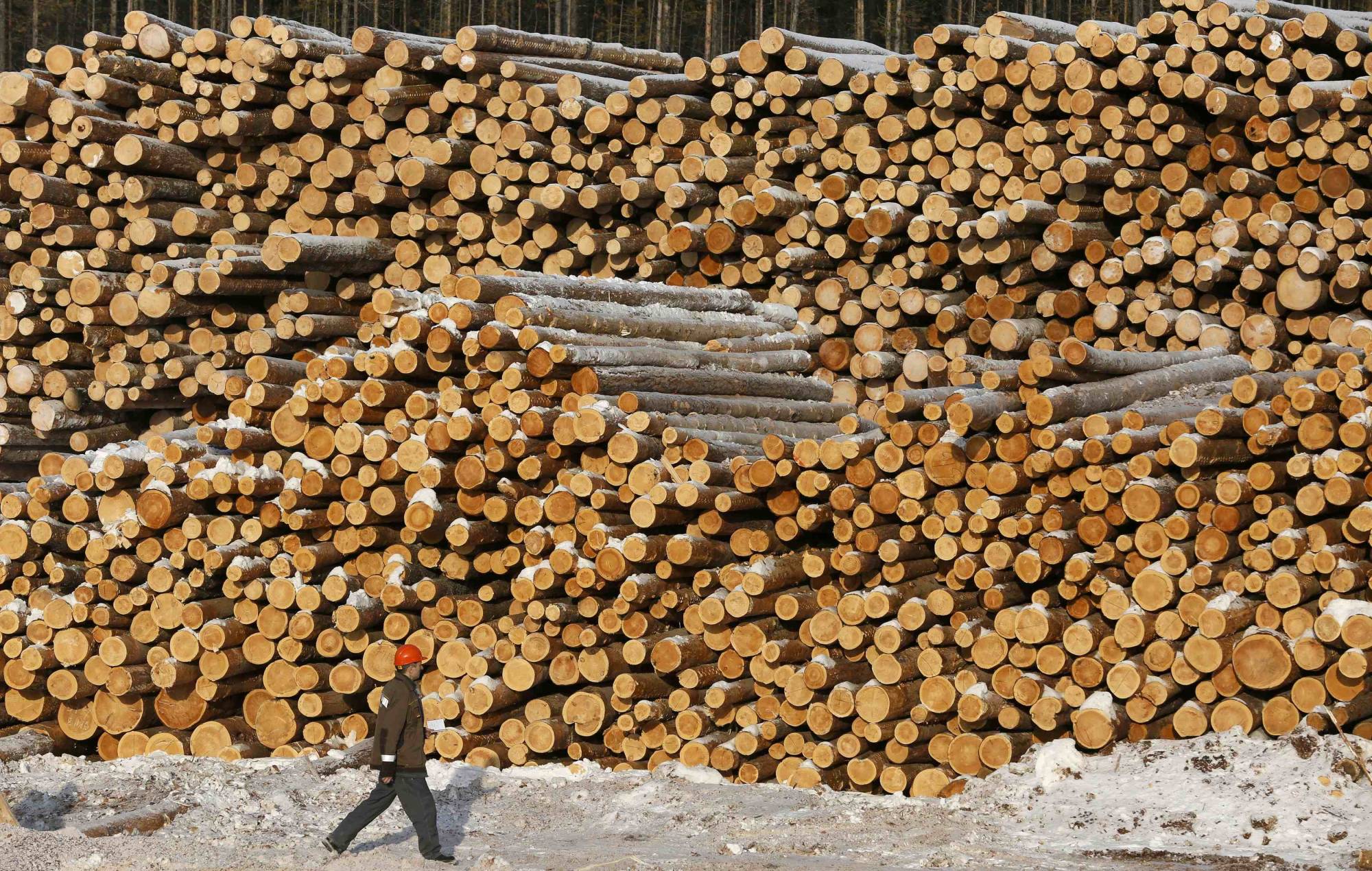The global lumber industry has been through a tumultuous period over the past year or so due to wood shortages that have in turn led to skyrocketing lumber prices.
The Russia-Ukraine war has now posed a fresh challenge to the industry, as the world economy will likely have to make do without Russia, a major exporter of wood products, for some time.
In March, Russia halted the export of three wood items — wood chips, logs and veneer sheets — to Japan after it was added to Moscow’s list of “unfriendly” countries. The Japanese government responded by imposing additional sanctions, including a ban on imports of those wood products, on April 19.
With the geopolitical tensions showing no signs of easing, people in the lumber industry say that the trade ban is casting a pall over their businesses, with lumber prices likely staying high and some firms forced to seek products to replace Russian wood.

Soya Higashino, who heads Higashino Timber Co., an Osaka-based firm that provides construction services and lumber products, said he got chills when he first encountered news of the trade ban.
“While (the industry) has been facing wood shortages due to the ‘wood shock’ since 2021, we are now facing an extra issue,” Higashino said.
Lumber prices started their ascent at the beginning of last year, when housing demand in the United States and China, which were making a solid recovery from the pandemic, started to swell, causing lumber shortages.
Wholesale prices of some imported lumber items had more than doubled by the end of last year, according to data released by the Bank of Japan.
“The trade ban comes at a time when we’ve already been struggling with procurement. So I wouldn’t be surprised if lumber prices temporarily soar, since many companies might rush to secure Russian wood (stocks) while they can still get them,” Higashino said.
The trade prohibition excludes items such as laminated lumber, plywood boards and rafters.
On top of the already inflated price of lumber, the recent weakening of the yen is further pushing up import costs. The yen’s value against the U.S. dollar has fallen more than 10% this year.
“Prices of imported lumber goods might further increase. It’s probably unlikely that they will go down to the levels (seen before the pandemic),” said Kiyotaka Okada, executive director at the Japan Lumber Importers Association.
According to the Ministry of Agriculture, Forestry and Fisheries, the total import value of wood items was about ¥1.2 trillion last year, of which Russian wood accounted for ¥63.4 billion, or around 5%.
While the trade figures show that imported Russian wood may not be huge in value, that belies the level of concern within the industry.
Russian wood is commonly used for housing construction, so many carpenters and builders are accustomed to using it.
For instance, Russian wood veneer sheets made of larch are popular as covering for the outer layers of plywood boards that are often used as part of housing structures. Russia accounts for about 80% of Japan’s veneer sheet imports.
Data from the forestry ministry shows that imported wood veneer only accounted for 3% of the wooden material used to make plywood in 2020, but it will still likely trouble some businesses.
“Wood veneer sheets will be impacted the most. … Domestic plywood board-makers are having a bit of a problem,” said Okada.
“(Producers) still have stocks, so there will be no drastic changes in the immediate future, but if the sanctions become prolonged, they are worried that the impact would be quite big.”
House builders that rely on Russian lumber products will have to seek alternatives and may have to delay construction, said Higashino.
In addition, more companies are likely to stop using Russian wood to avoid damaging their reputation, people in the industry said. In that case, those firms will eventually have to seek replacements as well.
Higashino added that the direct impact on sales and profit for his firm will be minor, since Russian wood accounts for only about 7% of the lumber products handled by Higashino Timber. The main Russian item used by Higashino’s firm is square timber, which is not included on the list of the banned goods.
However, it is uncertain whether goods will be smoothly transported to Japan, as sanctions are gumming up supply chains and logistics.
“There is no way that (the trade ban) will bring any positive effect,” said Higashino.
Source: Japan Times
